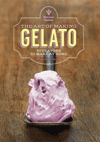Understanding and managing the shelf life of ice cream and related products is difficult enough. Maximizing (i.e., extending) the shelf life is the study of a lifetime.
Frozen desserts are the only products designed, formulated, manufactured, distributed, stored and offered for sale with the full intent of being consumed frozen. This means multiple elements combine to define “end of shelf life.” Assuming proper sanitation/pasteurization, examples include failure of one or more of the following: body/texture, color, flavor, regulatory considerations and nutrient/function/content declarations.
Often, the shelf life of any given product is set arbitrarily based on experience and/or competitive considerations. Also note that the laws of chemistry and physics have not changed since the “Big Bang,” but it is possible to interfere and manage these to extend the shelf life of ice cream.
What defines ‘end of shelf life’?
The most likely first features to “fail” are physical attributes associated with sensory appeal (body/texture and shrinkage.) These can be expected to fall short of expectations well before other sensory attributes (flavor, color, etc.)
It’s in the water
Minimizing the mobility of water while creating as many small ice crystals as possible is critical, as is retaining these as long as possible. Much of this relates to the freezing point of the mix, the amount of water frozen at a given temperature and the dynamics of whipping/freezing.
These factors may be optimized within practical limits to allow handling of the ice cream necessary to deliver inclusions and to allow flow into designated packaging — e.g., bulk for dipping, packs for retail sale, and filled, molded or extruded novelties.
Minimizing heat shock
In a perfect world, if distribution, storage and consumption temperatures are held unchanged, shelf life, as we know it, would be nearly indefinite. With no temperature changes, only osmotic pressure across solute gradients plays a role, and it produces extremely slow textural “degradation.”
It’s not realistic to achieve this type of uniform temperature control, but it is useful to consider, vis-a-vis, the reality of distribution and storage in any given market when minimizing heat shock whenever and wherever possible.
Minimizing the mobility of liquid water
You can slow the transition of ice-to-water-to-ice by interfering with the behavior of liquid water. This includes managing freezing point and the resulting viscosity of the unfrozen portion of the ice cream.
A way to quantify this and allow mix-to-mix comparisons is the Water Control Index (WCI.) WCI reflects the potential of increasing the interference of mix components related to the flow of liquid water at any temperature; inherently adding resistance to flow, resistance to water-to-ice transitioning and, therefore, resistance to heat shock.
Stabilizers and emulsifiers
This is an obvious category when seeking to extend shelf life. What might not be as obvious is that managing proteins and soluble “mid-sized” carbohydrates (not “sugars”) are also key.
Remember, all these components share something: “large” molecular weights. These large molecules do not “bind” water, per se, but inhibit the movement of water. Examples include:
- Classical stabilizer gums: guar, locust bean, cellulose gum, tara gum, etc.
- Caseins and other proteins.
- Large-molecular-weight maltodextrins.
- Higher-molecular-weight components of bulking agents.
- Partially digestible or indigestible products such as polydextrose, microcrystalline cellulose and resistant maltodextrins.
- Emulsifiers. Despite not directly immobilizing water, emulsifiers enable fat agglomeration, which, in turn, interferes with the mobility of water.
Homogenization
Not readily apparent is the need for proper homogenization to attain good shelf life, not to mention creaminess. This is due to many small fat globules promoting agglomeration, which, in turn, impedes water mobility and ice crystal growth. Unfortunately, these are influences that are increasingly neglected. Proper pressures and valve maintenance are critical.
Mix freezing
Draw temperatures need to be as low as possible in the barrel to allow for rapid freezing and creation of more, smaller ice crystals. Low-viscosity mixes can be drawn at lower temperatures, with more air and improved fat agglomeration.
While this seems counterintuitive, it is a result of added mechanical action in the freezer barrel. All things being equal, a thicker mix will reach the mechanical limits of the freezer sooner, thus restricting whipping and freezing.
Inclusions
Sometimes overlooked is the influence of added inclusions (particulates and syrups) and their effect on textural shelf life. A common problem is “sandiness” due to the higher levels of salts and sugars used in inclusions, which draw water from the surrounding unfrozen portion. This then causes dissolved lactose to exceed its saturation point and crystallize. Other issues related to eating qualities in/around inclusions themselves also can result.
While working to extend a product’s textural shelf life, it is good to remember that no good deed goes unpunished! While reducing the size and increasing the number of ice crystals and making smaller, stronger air cells, you also increase the risk of changing the sensory properties of the final ice cream (hopefully for the better), as well as introduce the risk of shrinkage (another 100-year-old problem).
What did we say earlier? The study of a lifetime!










